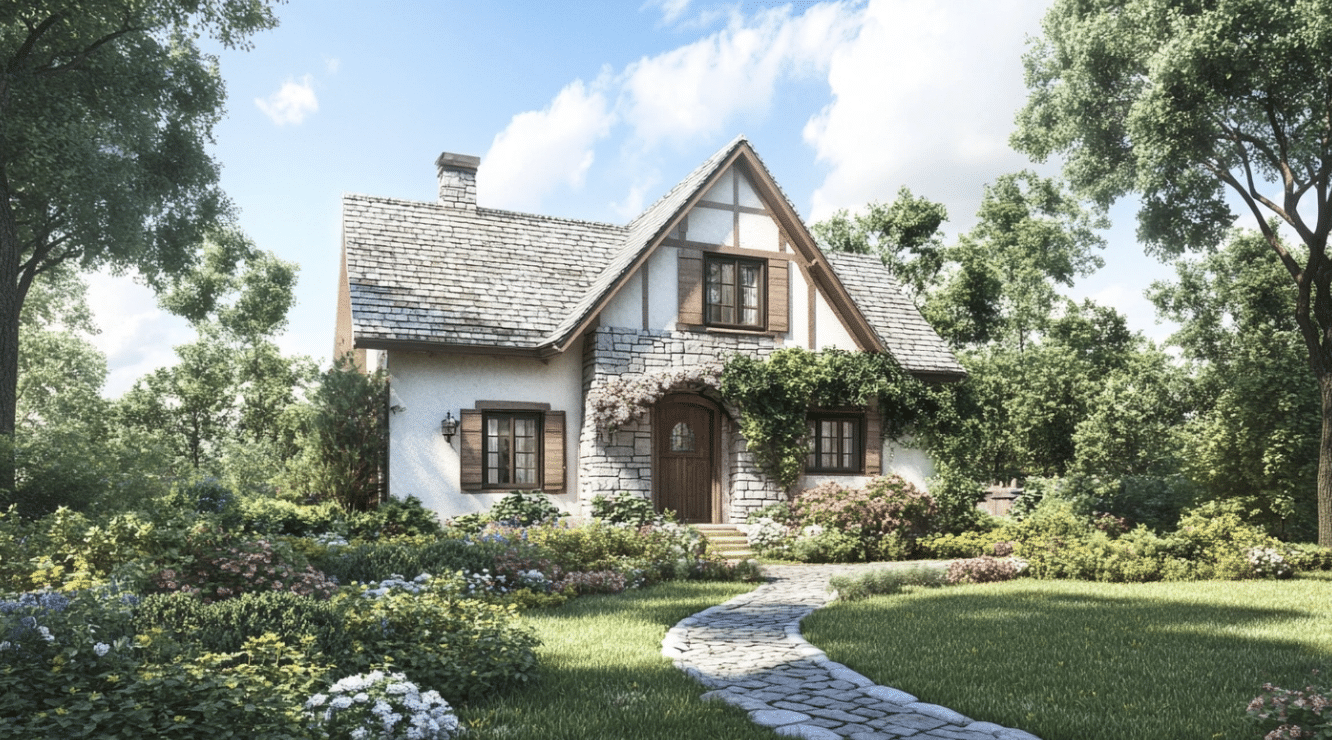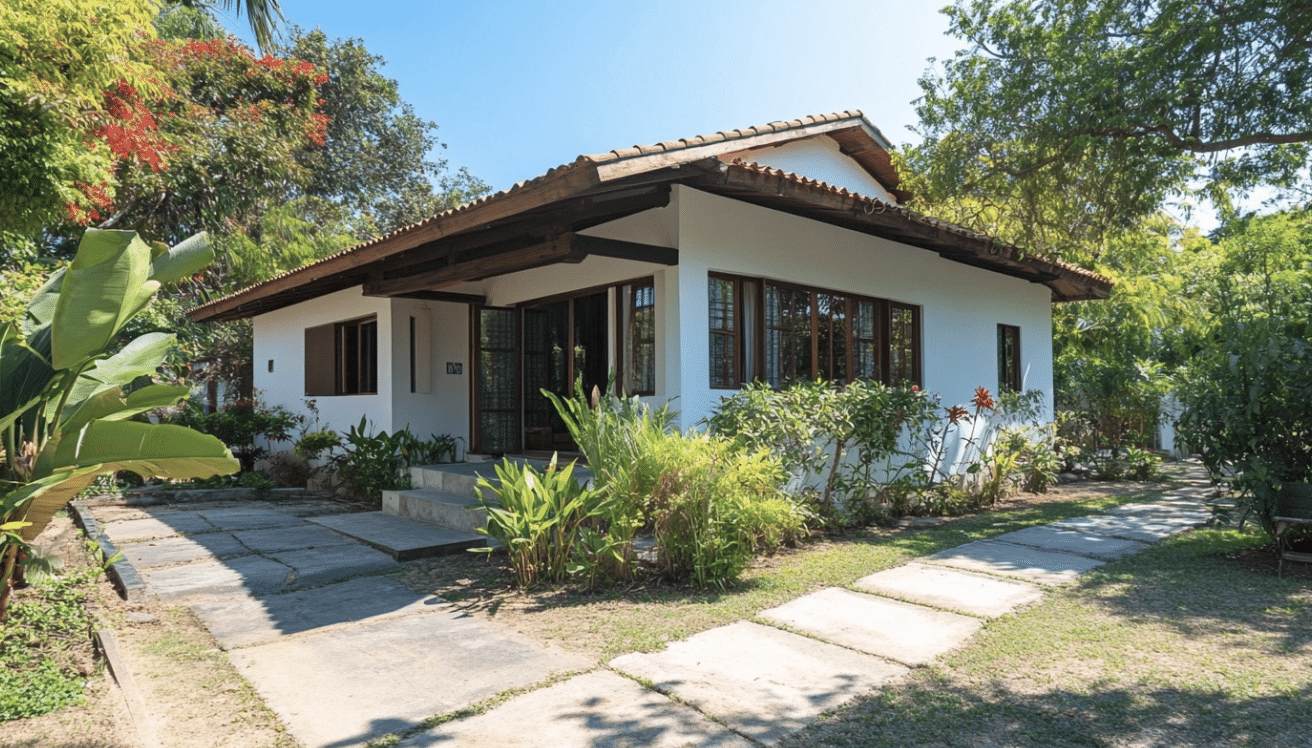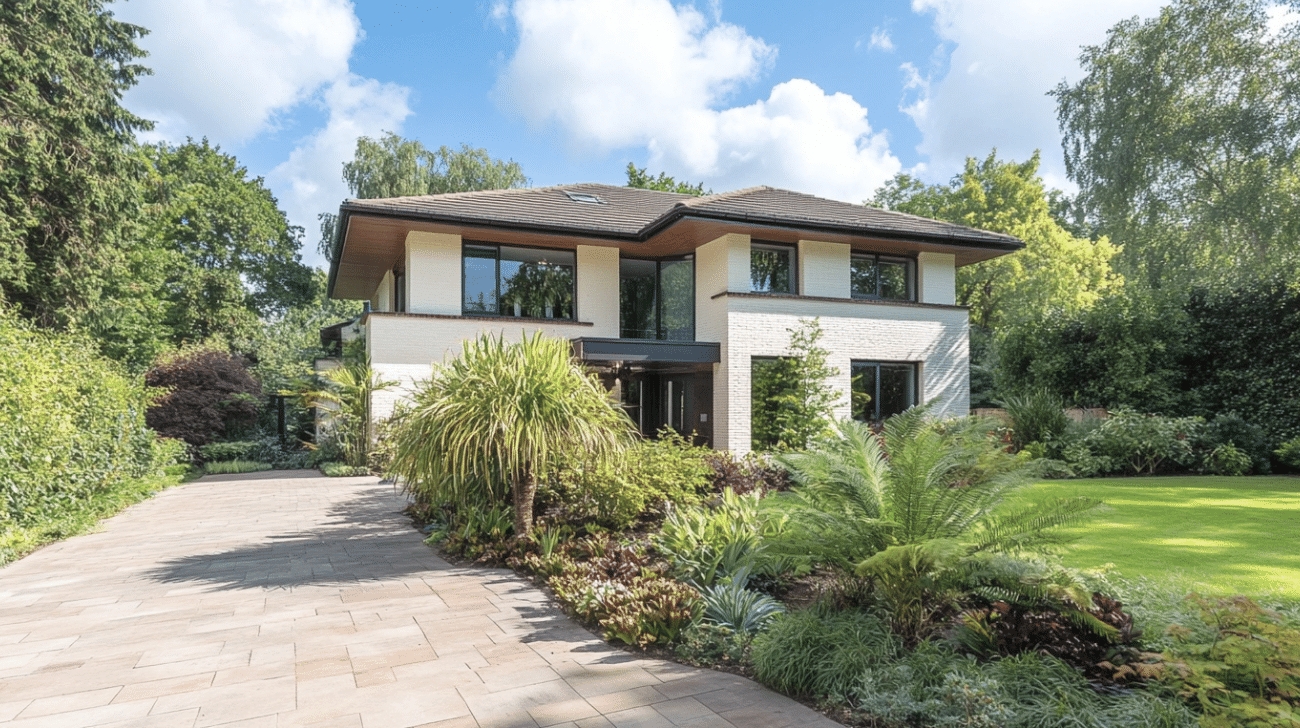
Detached houses remain a popular and traditional choice for families who value privacy and space.
Unlike other housing types, detached homes offer a unique sense of independence, making them a preferred option for those seeking a personal retreat.
This overview will explore the key characteristics, benefits, and important considerations of owning a detached house.
By the end, you will have a clearer understanding of whether this type of home aligns with your lifestyle and needs.
We will cover the fundamental aspects, including what defines a detached house, the different types available, the pros and cons of ownership, and essential factors to remember when deciding.
Let us begin!
Understanding Detached Houses
Detached houses are freestanding residential buildings that stand independently without sharing walls with neighboring homes.
This type of housing is distinct for its ability to provide a sense of privacy and space that homeowners often seek.
Unlike attached homes such as townhouses or apartments, detached houses offer an uninterrupted boundary, giving owners complete control over the house and its land.
This full ownership allows homeowners to make decisions about their property without the constraints often imposed in shared living environments.
For example, detached homeowners can landscape their yards, build extensions, or even add outdoor amenities like a pool or patio, all within the privacy of their own space.
Greenspace is another characteristic of detached houses. Typically, these homes have a front yard, backyard, and sometimes a side yard, providing ample outdoor space for various activities.
Whether gardening, playing with pets, or hosting outdoor gatherings, the presence of greenspace enhances the living experience and offers a personal retreat within the property.
Types of Detached Houses
Detached houses come in various forms, each catering to different needs, lifestyles, and preferences.
1. Cottages

Cottages are typically smaller and more intimate and found in rural or semi-rural settings.
They are known for their cozy, homely feel, making them a popular choice for those seeking a retreat from the hustle and bustle of city life.
Despite their smaller size, cottages often feature charming designs, with gardens and outdoor spaces that enhance their appeal.
2. Bungalows

Bungalows are single-story detached houses that are particularly popular among those who prefer a home without stairs.
Their design makes them accessible and convenient, especially for elderly homeowners or those with mobility issues.
Bungalows often come with spacious layouts and large yards, providing plenty of room for outdoor activities.
3. Mansions

At the other end of the spectrum are mansions, which are large, luxurious detached homes often associated with wealth and prestige.
Mansions typically feature multiple stories, expansive grounds, and various amenities such as pools, guest houses, and elaborate gardens.
They are designed to offer the highest level of comfort and luxury, making them a symbol of affluence.
Historical and Regional Context of Detached Houses
The concept of detached houses has evolved significantly, particularly as societies have transitioned from multi-family dwellings to the modern nuclear family model.
In pre-industrial societies, it was common for multiple generations to live under one roof, often in multi-family homes.
This arrangement provided practical benefits, such as shared resources, mutual support, and the efficient use of space, especially in densely populated areas or regions with harsh climates.
However, the trend began to shift with the advent of industrialization and the subsequent rise in living standards, especially in North America and Europe.
As economic conditions improved and land became more accessible, families moved away from the communal living arrangements of the past.
Detached houses became the ideal solution, offering separate living spaces where families could enjoy their own homes without the proximity of extended relatives or neighbors.
The prevalence of detached houses varies widely across different regions of the world, influenced by factors such as population density, cultural norms, and economic conditions.
Detached houses are common in North America, particularly in the United States and Canada, especially in suburban and rural areas.
The abundance of land and the cultural emphasis on privacy and homeownership have made detached homes the preferred choice for many families.
Suburban developments with sprawling single-family homes became synonymous with the American lifestyle, where the idea of owning a house with a yard became an integral part of the “American Dream.”
In countries like the United Kingdom, the cultural preference for owning a home remains strong, but the type of housing varies greatly depending on location.
For example, detached houses are widely favored in Australia and New Zealand, reflecting the countries’ colonial heritage and the availability of land.
In contrast, detached houses are less common in densely populated regions of Asia, such as Japan and Hong Kong, due to space constraints and high property prices.
Benefits of Owning a Detached House
1. Privacy
The absence of shared walls in a detached house means you are less likely to be disturbed by noise from neighboring homes.
Privacy extends beyond just noise reduction. Detached houses offer greater control over property boundaries, enabling homeowners to create a personal retreat free from external intrusions.
Whether through fencing, landscaping, or other boundary markers, you can shape your surroundings to ensure the level of seclusion you desire.
2. Space
Detached houses are typically larger than attached homes, providing more living space for you and your family.
This extra space is not limited to the house’s interior; detached homes often have generous outdoor areas, including front yards, backyards, and sometimes even side yards.
These spaces can be utilized in various ways, such as creating a garden, installing a playground, or adding outdoor amenities like a pool or a deck.
Many homeowners also take advantage of this extra space to build a detached garage, offering additional storage, secure parking, or a separate workshop area.
A detached house’s spaciousness also allows for potential expansions. If you need more room, consider building an addition, converting a garage, or finishing a basement.
This flexibility makes detached homes ideal for growing families or those anticipating changes in their living needs over time.
3. Customization
Owning a detached house lets you personalize your home to suit your preferences and lifestyle.
Unlike attached homes, where modifications may be restricted by shared structures or homeowner association (HOA) rules, detached houses allow for greater creative expression.
4. Investment Potential
Detached houses often represent sound investments because the owners own both the structure and the land on which it sits.
Over time, as property values appreciate, the investment in a detached home can yield significant returns.
This is particularly true in areas where land is scarce or highly desirable, making detached homes valuable.
Considerations Before Buying a Detached House
Cost and Maintenance
When contemplating the purchase of a detached house, it’s essential to consider the financial and maintenance responsibilities that come with it.
Detached houses generally have higher purchase prices than attached homes. This is partly due to the ownership of the land, the larger living spaces, and the independence that detached houses offer.
In addition to the initial purchase cost, ongoing maintenance can be more demanding and costly. As a detached homeowner, you are solely responsible for the upkeep of your property’s interior and exterior.
This includes lawn care, landscaping, and exterior repairs, such as fixing the roof, painting the house, and maintaining gutters.
Unlike attached homes, where certain maintenance tasks might be covered by a homeowners’ association (HOA), detached homeowners bear the full burden of these responsibilities.
Therefore, it’s crucial to factor in the time, effort, and financial resources required to keep the property in good condition.
Security and Isolation
While the privacy of a detached house is a significant benefit, it can also lead to a sense of isolation, particularly if the home is located in a remote or sparsely populated area.
Unlike living in a community with shared spaces or close-knit neighbors, detached homeowners may feel more isolated, especially during emergencies or when needing assistance.
This potential isolation highlights the importance of implementing robust security measures to ensure the safety of your home.
Investing in a reliable security system, installing motion-activated exterior lighting, and securing all entry points are critical to protecting your property.
Additionally, fencing the property and establishing good relationships with neighbors, even in a detached setting, can help mitigate feelings of isolation while enhancing security.
Commute and Location
Detached houses are often found in suburban or rural areas, offering a peaceful and spacious living environment.
However, this typically comes with the trade-off of longer commutes to work, schools, and other daily destinations.
Longer commutes can affect your work-life balance, increase transportation costs, and reduce your time for leisure activities or family.
Additionally, the location of the detached house should be considered in terms of its proximity to essential amenities such as grocery stores, healthcare facilities, and public transportation.
Comparing Detached Homes to Other Housing Types
| Feature | Detached Homes | Semi-Detached Homes | Townhouses |
|---|---|---|---|
| Privacy | Highest level of privacy; no shared walls | Moderate privacy; one shared wall with a neighbor | Lower privacy; shared walls on both sides |
| Space | Largest space, including yard/garden | Moderate space; smaller yard/garden | Compact space; typically limited outdoor area |
| Cost | Higher purchase and maintenance costs | Moderate cost; more affordable than detached homes | Generally lower cost; often more affordable |
| Maintenance | Owner responsible for all maintenance | Owner responsible for own unit and shared wall | HOA, lower responsibility often covers maintenance |
| Customization | Maximum freedom for customization | Some freedom, but limited by the shared structure | Limited customization, especially exterior |
| Amenities | Usually, there are no shared amenities; private ownership | Possible shared amenities with the attached neighbor | Often has shared amenities like gardens, gyms |
| Noise | Least noise from neighbors | Some noise transfers through a shared wall | More noise due to multiple shared walls |
| Community Feeling | Less community interaction, more isolated | Balanced community interaction | High community interaction due to proximity |
| Location | Common in suburban and rural areas | Common in suburban areas | Common in urban areas |
| Ideal for | Families needing space and privacy, long-term residents | Those seeking a balance of privacy and affordability | Urban dwellers looking for affordability and amenities |
Conclusion
Detached houses provide unmatched privacy and space, making them an attractive option for those who value independence in their living environment.
However, these benefits come with higher costs and increased maintenance responsibilities.
As you consider your options, assessing your lifestyle, budget, and long-term goals is important.
By carefully evaluating these factors, you can determine whether a detached house aligns with your needs and is the right choice for your future.

